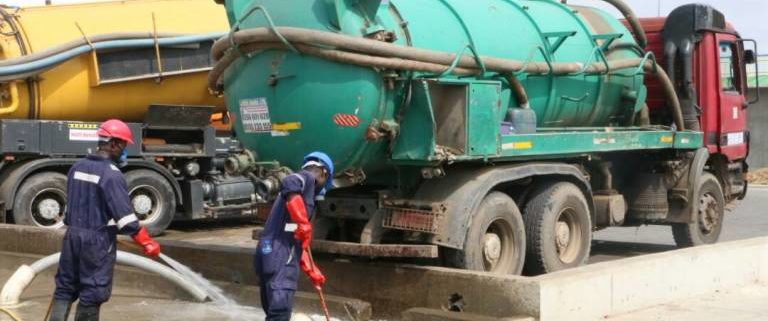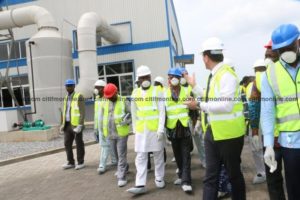Accra’s New Liquid Waste Management
Sewerage Systems Ghana Limited (SSGL) is an engineering, construction and procurement specialist that aims to provide the Accra metropolis with decent and cost-effective disposal of effluent and fecal sludge while maintaining financial sustainability. SSGL offers ecological sanitation solutions to the Accra Metropolitan Assembly and has entered into a Public Private Partnership (PPP) with the Ministries of Local Government and Rural Development.
SSGL wants to ensure that Accra’s fecal sludge management can be independent of donors’ financial support and be financially sustainable if potential revenue from households, agricultural users and the government is realized. They also hope to increase the gross margin of the company through income from by-products generated during the treatment process, such as compost and electricity.
The New Lavender Hill
The discharge of raw sewage into the Atlantic Ocean at Korle Gonno, which has occurred for almost 110 years, now may end with the commissioning of the New Lavender Hill Plant. The 200 vehicles that used to discharge into the ocean daily can now discharge 24 hours a day at the New Lavender Hill.
The plant has a design capacity to handle the 2000 cubic meters, the amount typically generated by these 200 cesspit emptiers a day. The plant has a maximum capacity of 2400 cubic meters. Construction was completed in November 2016. The plant is anticipated to generate 7000 cubic meters of biogas, producing 400 to 500 kW of electricity. Biosolids from the process will be dried for further composting as organic manure.
Kotoku Septage Treatment Plant
Construction of the Kotoku Septage Treatment Plant began in 2012 at the the Accra Compost and Recycling Plant. This plant is a smaller version of the Lavender Hill Plant and will handle liquid waste from the Northern parts of the Greater Accra Region. The plant is anticipated to treat 1500 cubic meters of liquid waste from about 90 cesspit trucks daily. This is the waste equivalent of 935,000 persons per day.
Mudor Faecal Treatment Plant
Accra’s Central Business District and portions of Labone and Osu and ministries are served by a sewer network system. In the early 2000s, the Mudor Waste Water Treatment Plant was constructed to treat this waste but became dysfunctional a few years after commissioning. When the plant was dysfunctional, untreated waste was pumped out to sea via an outfall pipe. SSGL and their Chinese contractors have rehabilitated the plant and expanded the capacity of the plant to 18,000 cubic meters per day. This expansion will account for expanded sewer network from the Accra sewerage improvement project. The maximum capacity is now 21,000 cubic meters per day. In population equivalents, the plant handles the waste of 105,000 persons per day.
Impacts
These improvements to treatment of fecal sludge and effluent in Accra will directly impact the endemic annual challenges of water-borne diseases faced by the population. The agricultural sector will also be supported through the conversion of waste into organic and natural substitutes for traditional chemical fertilizers.






Leave a Reply
Want to join the discussion?Feel free to contribute!